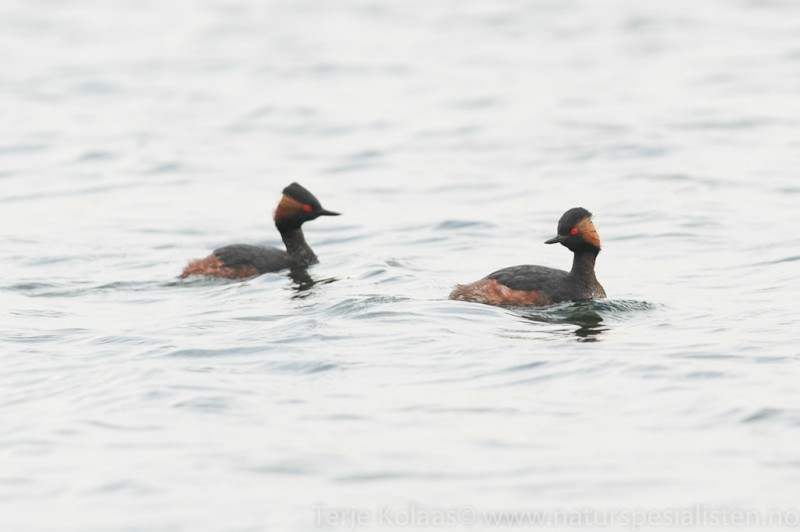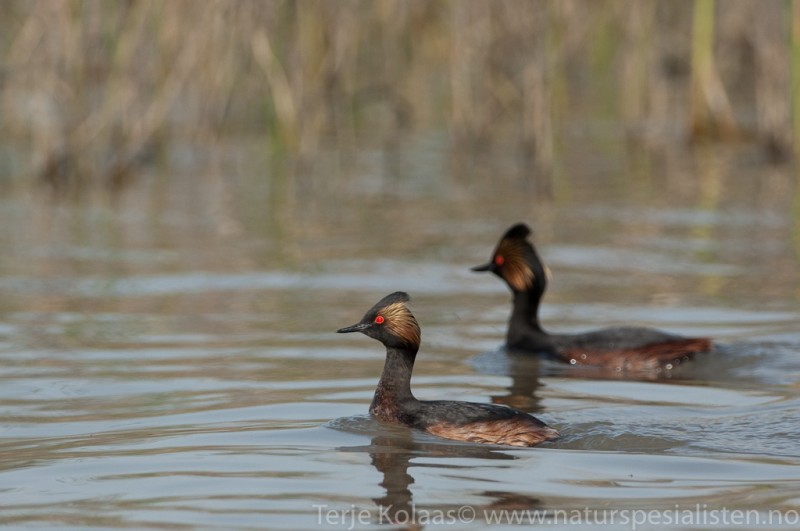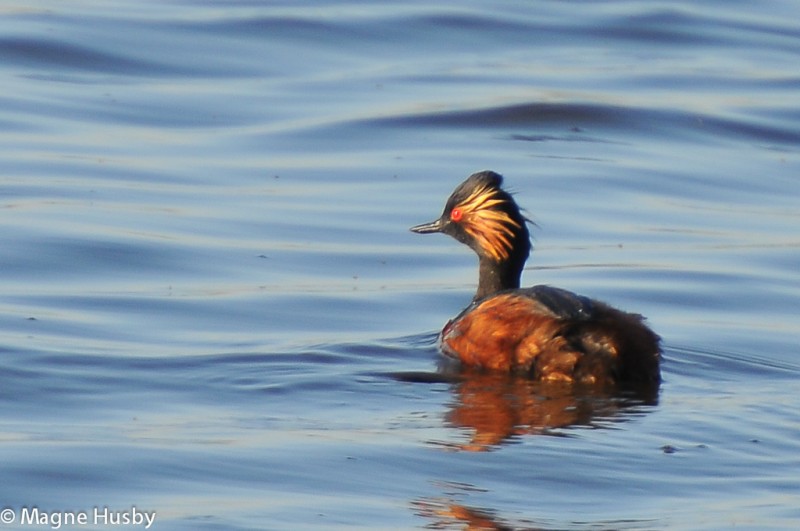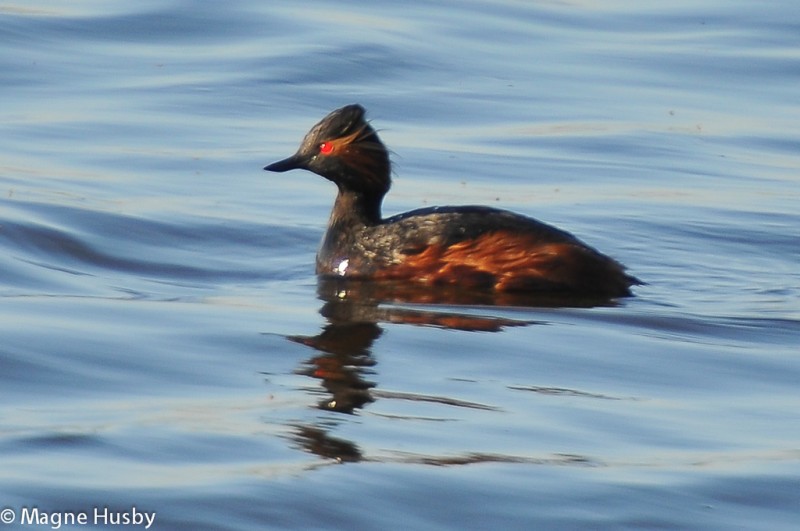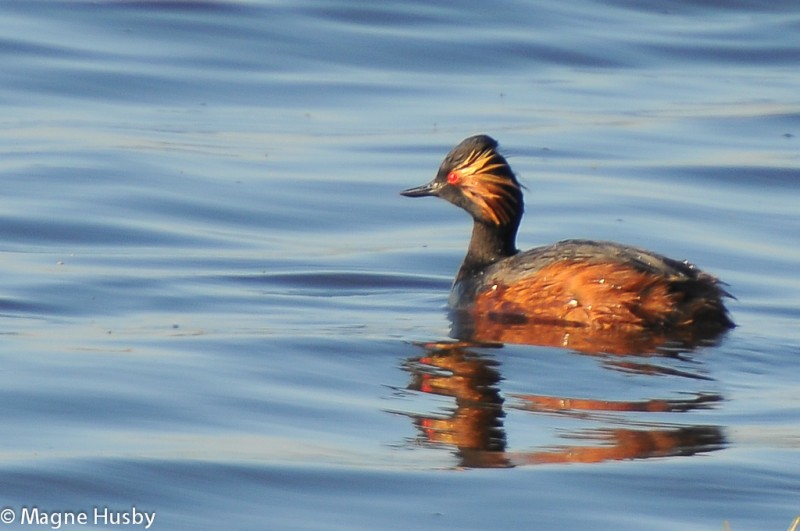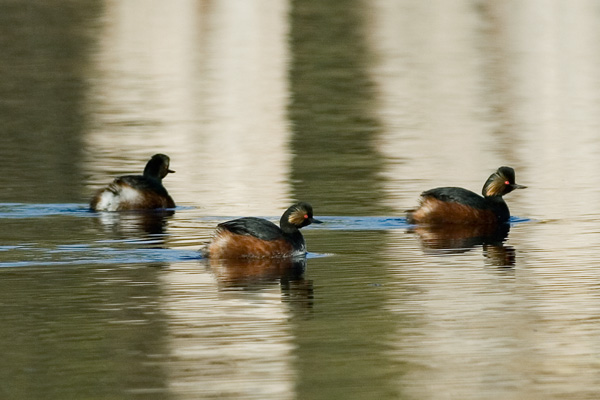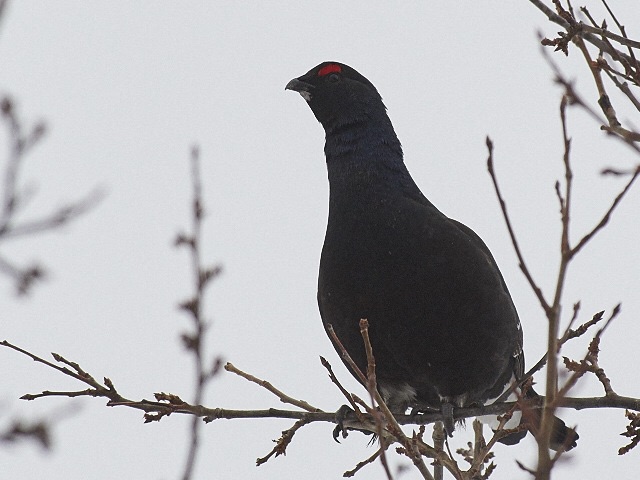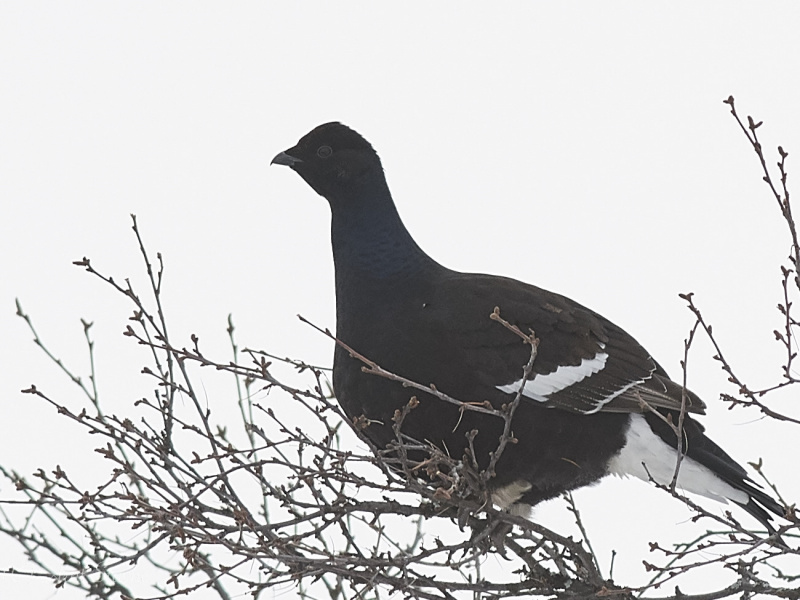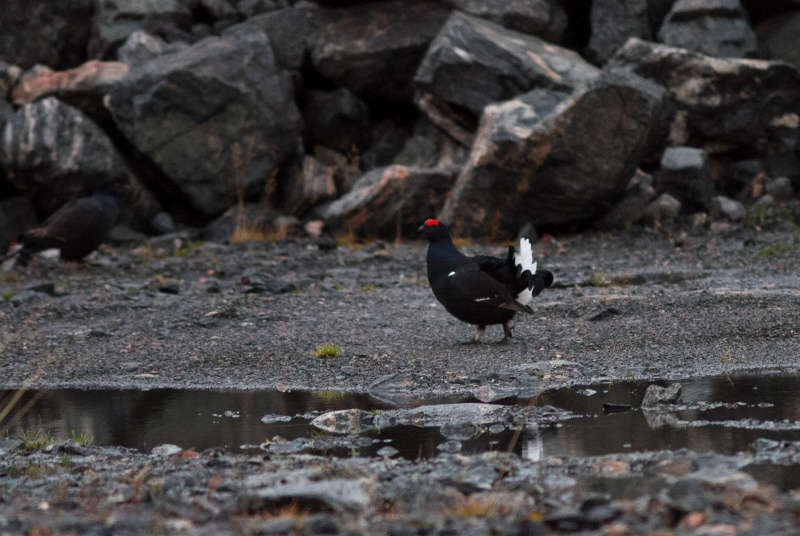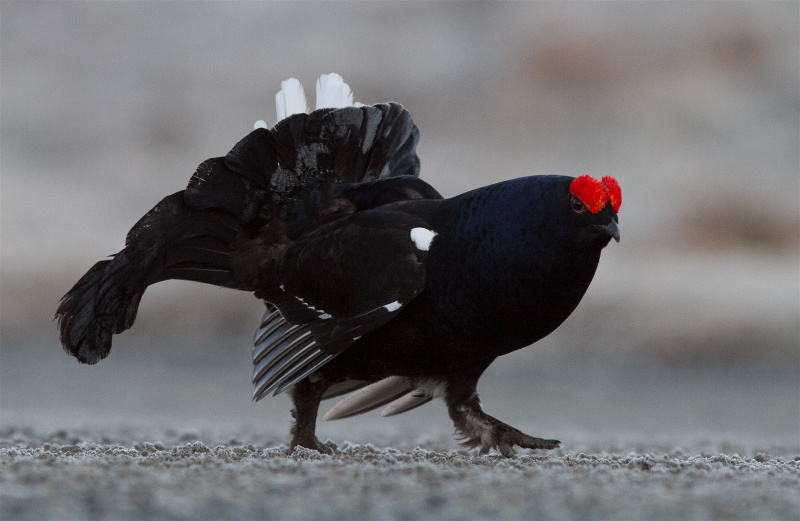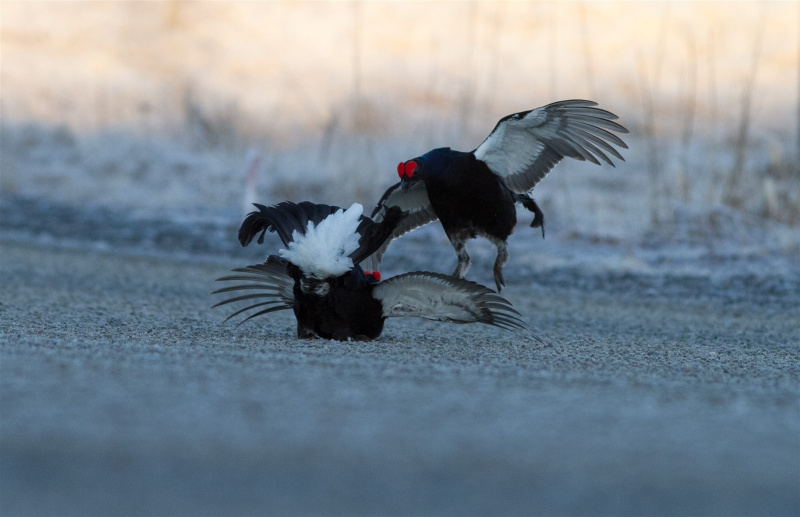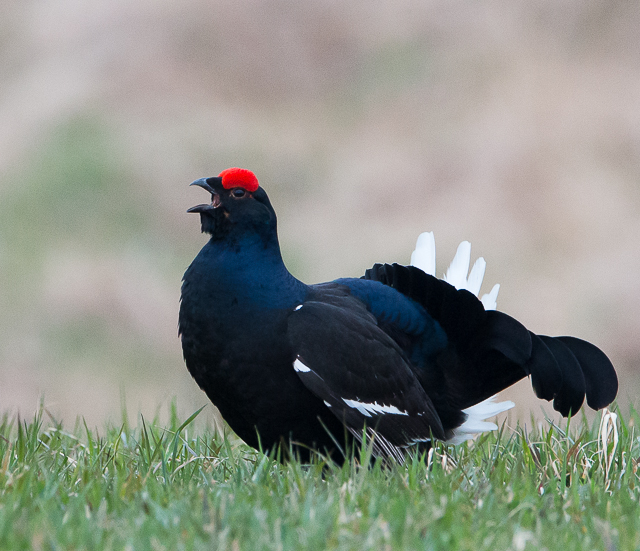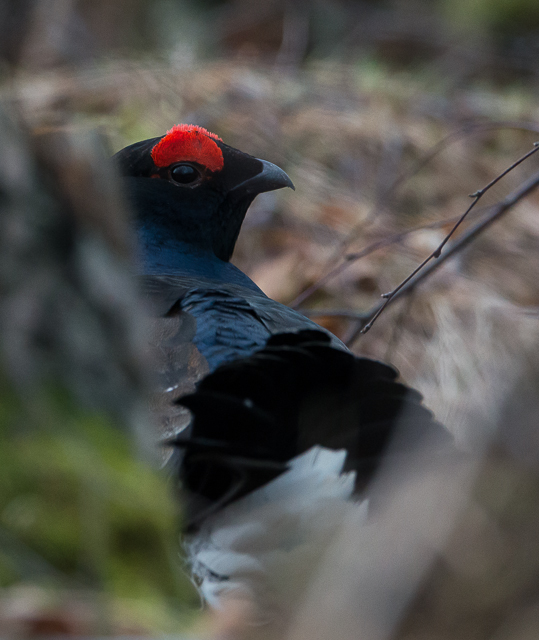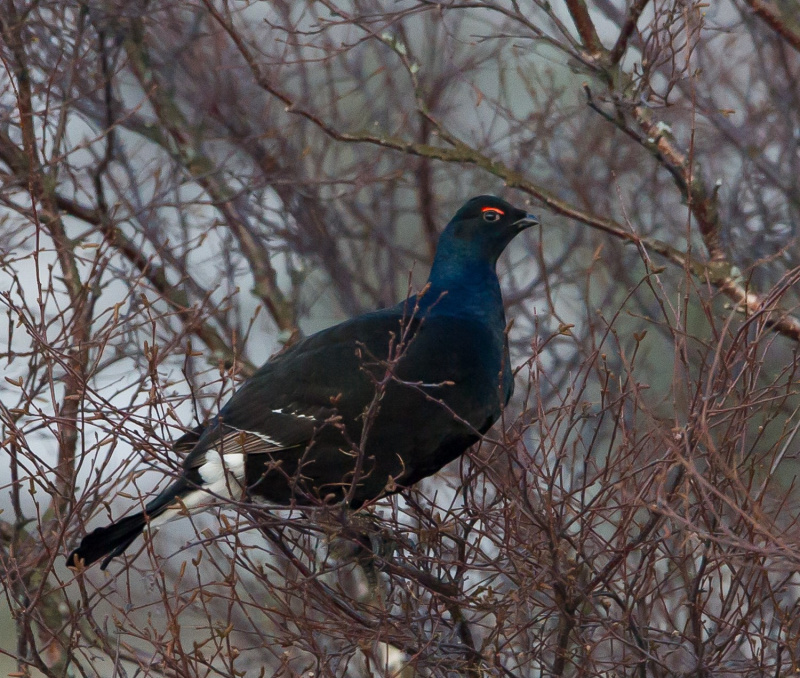Black-necked Grebe (Podiceps nigricollis)
Black Grouse (Lyrurus tetrix)
Small and dark grebe, with squarish head and thin, uptilted bill. Adult breeding plumage distinct, with unique combination of black head and neck, and a spray of golden, fan-like feathers from eye to nape. Winter plumage birds are easily confused with Slavonian Grebe, but note dark, rear cheek-patch, and darker collar. Head profile distinct, with its steep forehead. In winter plumage highest point is above the eye, as opposed to nape in Slavonian. Much more contrasting plumage than Little Grebe. Avoids to take wing if possible.
Sound:Territorial song a disyllabic, flute-like "zoeeee-chk". First part drawn, ascending and plaintive, second part descending and clipping. Timbre is unpure. Other calls include chittering and trilling calls resembling Slavonian or Little Grebe.
Song:
Distribution:
Wikipedia: map (se also Xeno-canto below)
Ecology:Birdlife ecology
Links:
Observation.org Latest observations
Image search Flickr NB! May give other species
CCMale differs from Capercaillie in smaller size, stockier build, curled outer tail-feathers and pure white under tail-coverts. Both sexes with white wing bars. Female more evenly speckled than Capercaillie, lacking brick coloured patches on breast an neck. Much less noisy when flushed than Capercaillie.
Sound:Song: a far reaching, continuous, bubbly cooing, occasionally interrupted by a hissing "chooo-eee". Female calls with a nasal "go-go-go-gooo", ending on a falling drawn-out note.
Song:
Distribution:
Wikipedia: map (se also Xeno-canto below)
Ecology:Birdlife ecology
Links:
Observation.org Latest observations
Image search Flickr NB! May give other species
CC
 English
English Albanian
Albanian
 Armenian
Armenian
 Bulgarian
Bulgarian
 Catalan
Catalan
 Croatian
Croatian
 Czech
Czech
 Danish
Danish
 Dutch
Dutch
 Finnish
Finnish
 French
French
 Georgian
Georgian
 German
German
 Greek
Greek
 Hungarian
Hungarian
 Italian
Italian
 Latvian
Latvian
 Lithuanian
Lithuanian
 Macedonian
Macedonian
 Norwegian
Norwegian
 Polish
Polish
 Portuguese
Portuguese
 Romanian
Romanian
 Russian
Russian
 Sami : Lule sami
Sami : Lule sami
 Sami : North sami
Sami : North sami
 Sami : South sami
Sami : South sami
 Scientific names
Scientific names
 Serbian
Serbian
 Spanish
Spanish
 Swedish
Swedish
 Ukrainian
Ukrainian


